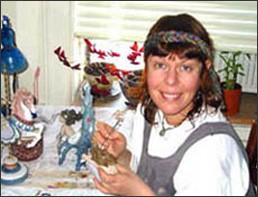Porcelain dolls represent rare collectibles which are able to increase their value in time. As beautiful as porcelain dolls are they are also quite delicate and can be easily damaged. Older dolls may require a certain degree of restoration in order to return to their original condition. If you’re looking to restore a porcelain doll by yourself there are a few simple steps you need to take into consideration:
Concerning bisque doll repair, the steps and processes are quite similar. Many times these dolls would require wig replacements and pate repairs as they are very delicate and crack easily. If you own a very valuable doll, it is always best to seek the assistance of a qualified doll repair specialist, as repair work is a very skilled process.
Luel Restoration Studio specializes in repair, restoration and fixing of damage ceramic, bisque and porcelain dolls.


Speak Your Mind